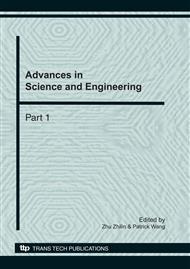p.937
p.941
p.948
p.955
p.961
p.968
p.974
p.979
p.985
Formal Modeling of Automotive Software Requirements by Correctness
Abstract:
Correctly modeling software requirements is one of the grand challenges of current ECU (Electronic control Unit) development. To ensure the correctness of the requirements, formal modeling techniques are usually used because they allow analyzers to simulate, verify and even conduct performance analysis in the requirement level. In this paper, we propose a requirements modeling framework, based on the philosophy of separation of concerns and the formal modeling techniques. The main contributions of this paper are two-fold: (1) We divide a complicated automotive software as several concerns, each of which is modeled by different formal techniques, thus the descriptive complexity of the requirements is decreased, and accordingly the models’ understandability is enhanced; (2) The adoption of formal techniques allows us to simulate the execution of the software and calculate the performance in the early stage of development, therefore the correctness of requirements can be improved.
Info:
Periodical:
Pages:
961-967
Citation:
Online since:
November 2010
Authors:
Price:
Сopyright:
© 2011 Trans Tech Publications Ltd. All Rights Reserved
Share:
Citation:


